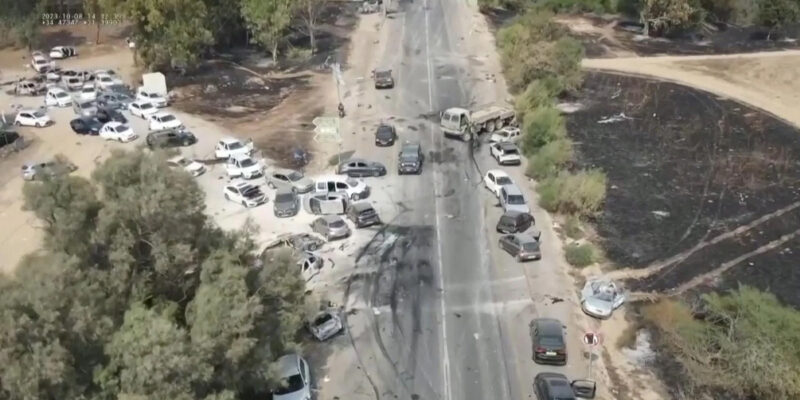The bell for morning assembly had barely died when the projector’s fan began to whine. It was 1957, and I was nine. Sister Mary Helene, her wimple starched to a blade, told us that today we would not recite the catechism. Instead, the lights went down and the screen filled with black-and-white images of Dachau, Bergen-Belsen, Auschwitz. Emaciated bodies stacked like firewood; bulldozers pushing them into pits; a child’s shoe, sole upwards, in the mud. The film was official American Army footage of liberated concentration camps, that was shot in April 1945, and then General Eisenhower had ordered the footage preserved “so that no one can ever say this did not happen.” We looked. Some of us became ill in the corridor afterwards. But none of us ever forgot.
Seventy-six years later, on the morning of 7 October 2023, Hamas fighters crossed the Gaza fence and repeated, on a smaller but no less intimate scale, the grammar of atrocity. They filmed their own work: the dragging of a naked woman through the streets of Gaza, the burning of a family in a safe-room, the execution of Thai farm workers who had come only to pick fruit. GoPro cameras, mobile phones, body-cams—every murder preserved in high definition. The material exists. Yet the reels do not turn in classrooms, nor on the evening news. The lights stay up. The Ministry of Truth, now rebranded as the Department of Sensitivity, murmurs that the footage is “too distressing,” “potentially inflammatory,” “liable to misinterpretation.” Translation: better that the public imagine than know.
I do not speak here of politics. I speak of evidence. When I was a child, the state insisted that we confront the capacity of ordinary men—postmen, accountants, railway clerks—to become exterminators. The lesson was not “Germans are evil” but “humans are capable of evil, and the line between clerk and killer is thinner than a cigarette paper.” Eisenhower understood that denial begins with ignorance; ignorance is fertilized by the refusal to look. The same refusal now fertilizes the claim that the events of 7 October were “staged,” “exaggerated,” or “understandable in context.” Without the raw image, the imagination is left to the mercy of the propagandist, who will always supply a cleaner, more convenient picture.
The objection will come at once: children must be protected. So they must. But protection is not the same as anesthesia. A nine-year-old in 1957 was not scarred for life by the sight of a corpse; he was armed for life by the knowledge that corpses can be made by men who look like his father. The Hamas footage is shorter, sharper, more personal than the liberation reels, but the principle is identical. If we shield the young from the worst that men do, we leave them defenseless against the worst that men will do again.
What is needed is not compulsory horror, but compulsory honesty. Let the footage be lodged in a secure archive, accessible on request to any citizen over the age of fourteen. Let schools be given the option—never the obligation—to screen it in the presence of teachers trained to answer questions, not to supply slogans. Let the TV networks, the newspapers, the platforms, link to it with a single click, the way they once linked to the Zapruder film. No commentary, no voice-over, no trigger warning longer than the sentence: “This is what happened.” The rest is silence, and the silence is the point.
Censorship, whether by government decree or corporate algorithm, is the ally of the next atrocity. It teaches the public to distrust its own eyes and to trust the curated summary. The child who has seen the bulldozer at Buchenwald does not need a minister to tell him that genocide is wrong; the child who has seen the GoPro footage from Kibbutz Nir Oz does not need a fact-checker to tell him that rape or murder of civilians is a war crime. Both children learn the same lesson: humanity is a thin crust over a volcano, and the crust must be watched.
Ike knew it. The censors of 2023 have forgotten lessons learned. Let the reels turn again.
Advertisement
Advertisement

